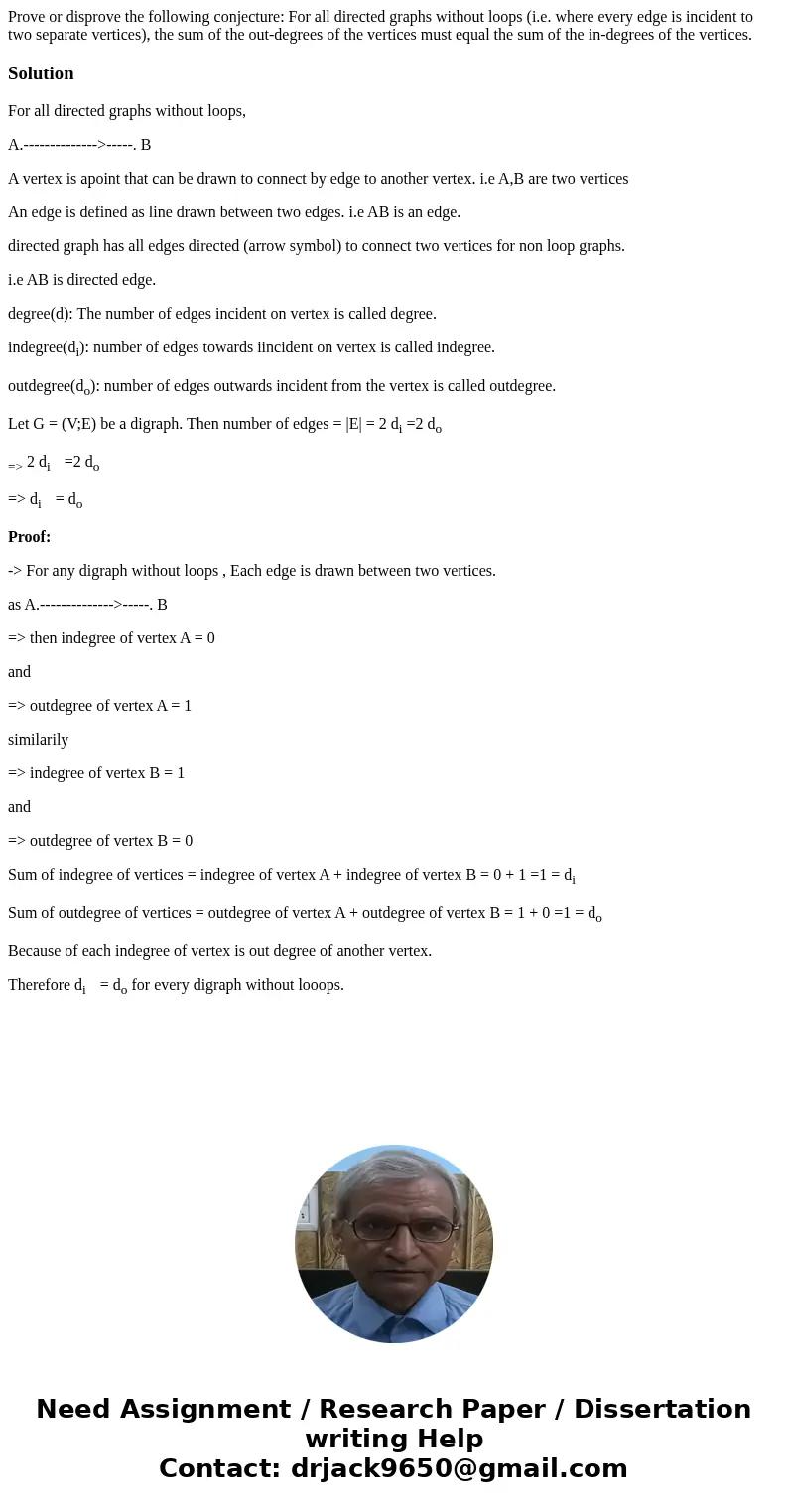Prove or disprove the following conjecture For all directed
Solution
For all directed graphs without loops,
A.-------------->-----. B
A vertex is apoint that can be drawn to connect by edge to another vertex. i.e A,B are two vertices
An edge is defined as line drawn between two edges. i.e AB is an edge.
directed graph has all edges directed (arrow symbol) to connect two vertices for non loop graphs.
i.e AB is directed edge.
degree(d): The number of edges incident on vertex is called degree.
indegree(di): number of edges towards iincident on vertex is called indegree.
outdegree(do): number of edges outwards incident from the vertex is called outdegree.
Let G = (V;E) be a digraph. Then number of edges = |E| = 2 di =2 do
=> 2 di =2 do
=> di = do
Proof:
-> For any digraph without loops , Each edge is drawn between two vertices.
as A.-------------->-----. B
=> then indegree of vertex A = 0
and
=> outdegree of vertex A = 1
similarily
=> indegree of vertex B = 1
and
=> outdegree of vertex B = 0
Sum of indegree of vertices = indegree of vertex A + indegree of vertex B = 0 + 1 =1 = di
Sum of outdegree of vertices = outdegree of vertex A + outdegree of vertex B = 1 + 0 =1 = do
Because of each indegree of vertex is out degree of another vertex.
Therefore di = do for every digraph without looops.

 Homework Sourse
Homework Sourse